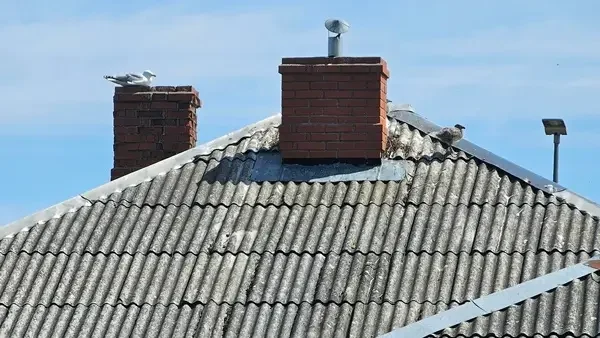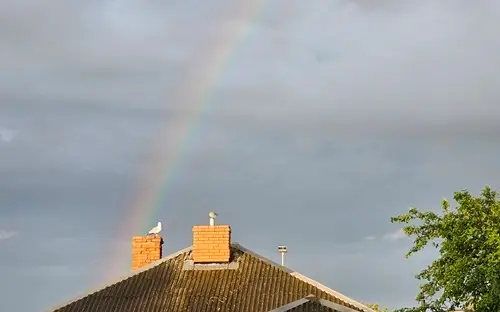Seagull, often dubbed the “spirits of the city,” are an integral part of Liepāja’s landscape. Many Liepāja residents consider them morning heralds, and their presence in the urban environment evokes a range of emotions – from admiration to annoyance.
In this article, we’ll explore the presence of gulls in the city, their habits, the reasons they’ve become so fond of urban areas, and how people can coexist with these interesting birds.
Why Do Seagull Choose the City?
The adaptation of gulls to urban environments is no accident. The primary reason is the easy availability of food. Much like crows, gulls are highly opportunistic foragers and readily exploit food left carelessly by humans. Uncovered waste bins, discarded food scraps, and even leftovers from public dining areas become easy food sources.
This abundance of resources attracts birds, providing them with the constant energy needed for survival. Another significant factor is safe nesting sites.
Although gulls historically nested on coastal cliffs or on the ground, modern cities offer alternatives like building rooftops. These rooftops, especially flat ones, mimic natural nesting sites, providing safety from ground predators and disturbances.
A new generation raised on rooftops will instinctively seek similar environments for their future nests, forming a generational population of urban gulls.
Gull Habits and Lifestyle in the City
Gulls are known for their ability to adapt to diverse environments, and the city is no exception. They are the least demanding of all seabirds when it comes to food, able to survive on anything they can find – from fish and invertebrates to garbage. This flexibility is one of the key reasons for their success in urban settings.
Gull species can be divided into three distinct groups based on their nesting habits:
• Coastal nesting: These gulls stay in coastal areas, nesting on cliffs or sand dunes.
• Freshwater body nesting: These gulls seek nesting sites on the shores of lakes and rivers.
• Inland nesting: These gulls are the most adapted to life in cities and agricultural areas, where they find food and safe nesting sites.
Urban gulls primarily belong to the latter two groups, as they successfully utilize the opportunities offered by the city.
The often-heard crying of gulls is an essential part of their communication. Birds shriek to warn of predators, signal the discovery of food, or simply communicate with each other. This loud communication can be either a calming and characteristic sound of the city or a nuisance, depending on an individual’s perception.
Within gull flocks, a hierarchy is established based on the individual’s size, aggressiveness, and physical strength. Adult males typically dominate females and younger birds at feeding sites, ensuring their priority access to resources.
Conversely, females play a leading role in choosing nesting sites, ensuring the successful upbringing of their offspring.
Gull Nesting in the City, Examples and Challenges
While gulls prefer to settle and roost on flat rooftops, they are highly adaptable and can also nest on sloped roofs if suitable support points are available. For example, chimneys or other roof structures can be used as support for nest building even on very steep surfaces.
This demonstrates the gulls’ ingenuity and ability to maximize available resources.
The female usually lays 2–4 eggs (most often three) directly on the ground in a hollow or other suitable spot. The eggs are olive green and richly mottled with dark spots, providing camouflage in their natural environment. The incubation period lasts 28–30 days, after which the young birds begin to fly at approximately 35–40 days old.
Parents typically care for their young until they reach 11–12 weeks of age, but sometimes they continue to care for them for up to 6 months. This extended period of care helps the young birds learn the necessary skills for survival.
The herring gull can reach a respectable age the oldest known individual reached 49 years old, demonstrating their longevity and resilience.
Coexisting with Urban Gulls, Challenges and Solutions.
Human attitudes towards urban gulls are twofold. For many, the gulls’ cries can be disturbing, especially in the early mornings or late evenings, while others enjoy it or simply pay no attention.
Conflicts mainly arise during the nesting season when adult birds can become aggressive and attack humans if they perceive a threat to their young. This protective behavior is a natural instinct but can create inconvenience for city residents.
To reduce conflict situations, it’s important to understand and respect gull biology and behavior.
How to Reduce Gull Presence Around Residential Buildings?
• Limiting Food Availability: The main and most effective way to reduce gull presence is to limit their access to food. This means carefully securing waste bins, not leaving food waste in public areas, and not leaving food freely accessible, for example, on balconies or terraces. The less readily available food there is, the less interest gulls will have in a particular area.
• Restricting Nesting Sites: If gulls regularly nest on building roofs, measures to limit nesting possibilities can be considered. This may involve installing special nets or spikes that prevent birds from landing and building nests. However, it should be noted that such solutions may only be necessary in cases where the gull presence causes significant harm or disturbance.
• Humane Deterrents: Various humane deterrents can be used, such as sound devices or reflective surfaces that birds dislike. Such measures can help deter gulls from specific areas without causing them harm.
• Raising Awareness: Education about gull habits and their role in the ecosystem can help change human attitudes and promote respect for these birds. It’s important to remember that gulls are not dangerous to humans and do not transmit diseases harmful to people.
VIDEO:
What to Do if Gulls Attack?
During the nesting season, if gulls perceive a threat to their young, they may attack humans to scare them away. In these cases, it’s important to remain calm and not provoke the birds. Avoid direct contact, quickly move away from the nesting area, and, if necessary, protect your head. Gulls usually only warn and never inflict serious harm.
Destroying nests, especially with chicks, is not humane and often not effective. Birds may return and build a new nest in the same or another nearby location. The best solution is preventive measures and patient coexistence.
Conclusion.
Urban gulls have become an indispensable part of Liepāja’s ecosystem. They have managed to adapt to the urban environment, finding food and safe nesting sites. Although their presence can create various challenges, with understanding and appropriate measures, it’s possible to foster harmonious coexistence.
By limiting food availability and using humane deterrents, we can reduce the presence of gulls in undesirable areas while respecting their natural role in nature. After all, gulls are not just the “voice” of the city, but also an important part of nature, reminding us of its presence even in the most urbanized environments.
How do you view the presence of gulls in your surroundings, and have you observed any interesting habits of theirs?
Have a Great Day!



